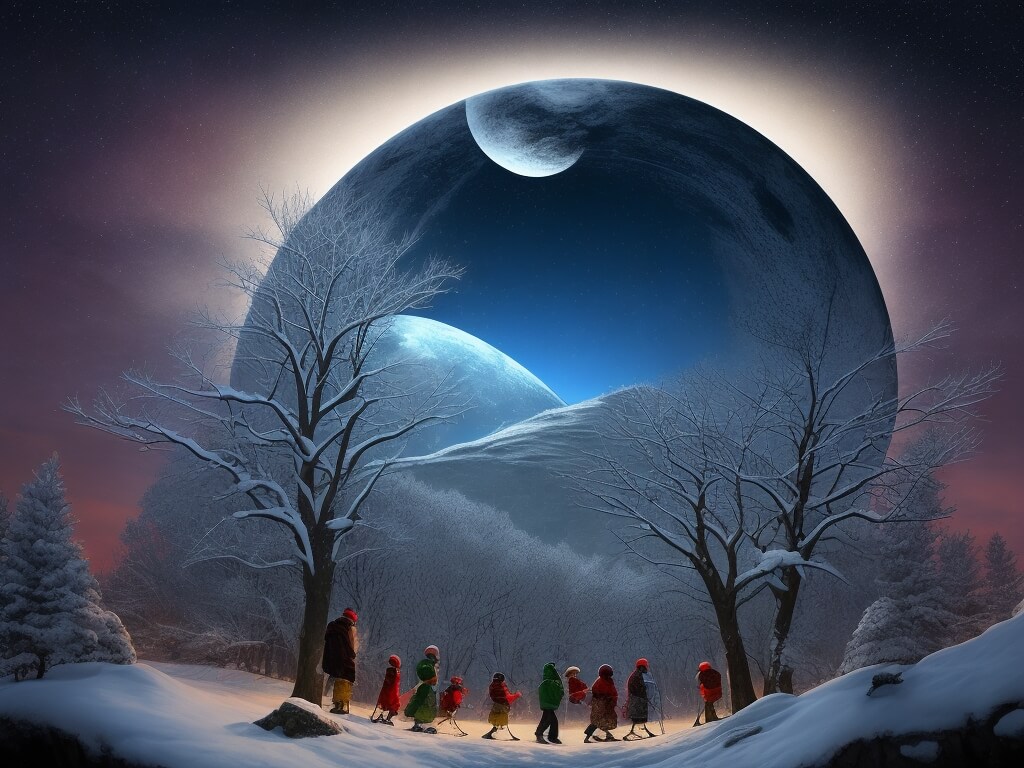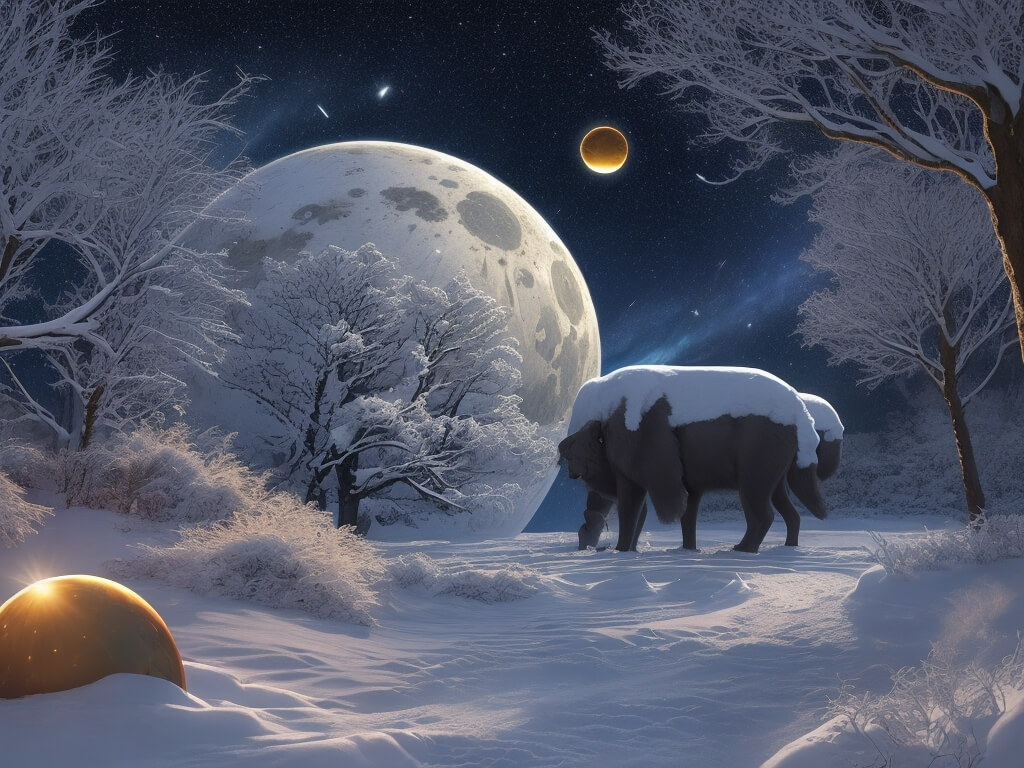Dive into the rich history and cultural tapestry of the December Solstice. From ancient observations to modern festivities, this post explores the astronomical marvels and traditions linked to the winter solstice.

The December Solstice, also known as the winter solstice in the Northern Hemisphere and the summer solstice in the Southern Hemisphere, is an astronomical event that occurs annually around December 21st or 22nd. It marks the point in Earth’s orbit around the sun where one hemisphere is tilted farthest away from the sun, resulting in the shortest day and longest night of the year in the Northern Hemisphere and the longest day and shortest night in the Southern Hemisphere.
During the December Solstice in the Northern Hemisphere, the North Pole is tilted farthest away from the sun, causing the sun to appear at its lowest point in the sky at noon. In the Southern Hemisphere, the South Pole is tilted toward the sun, resulting in the sun being at its highest point in the sky at noon.
The December Solstice has cultural and religious significance in various societies and often marks the beginning of winter in the Northern Hemisphere and summer in the Southern Hemisphere. Many cultures around the world celebrate this event with festivals, rituals, and traditions.
History of December Solstice
The December Solstice has been a significant event throughout human history, often associated with various cultural, religious, and agricultural practices. Here’s a brief overview of the history and significance of the December Solstice:
- Ancient Observations:
- Ancient cultures, such as the Egyptians, Greeks, Romans, and various indigenous peoples, were keen observers of the natural world. They noticed the changing patterns of daylight and darkness throughout the year and often built structures aligned with the solstices and equinoxes.
- Cultural and Religious Significance:
- In many cultures, the December Solstice marked a time of celebration and rituals. For example, the Romans celebrated Saturnalia, a festival honoring the god Saturn, around the time of the solstice. Similarly, the celebration of the birth of the Sun god in various ancient cultures often coincided with the solstices.
- Midwinter Festivals:
- In Northern European traditions, the December Solstice was associated with Yule, a midwinter festival that celebrated the return of the sun and the promise of longer days. Yule traditions, such as the Yule log and decorating with evergreens, have influenced modern Christmas customs.
- Archaeoastronomy:
- Many ancient structures, such as Stonehenge in England and Newgrange in Ireland, are believed to have astronomical alignments related to the solstices. These structures demonstrate the importance of celestial events in ancient societies and their efforts to understand and mark the passage of time.
- Modern Celebrations:
- Today, the December Solstice continues to be celebrated around the world, often in the form of religious observances, festivals, and secular traditions. In some cultures, it marks the beginning of winter festivities, while in others, it signifies the start of summer.
- Scientific Understanding:
- With advancements in astronomy, our understanding of the Earth’s axial tilt and its orbit around the sun has deepened. The December Solstice is now recognized as a natural astronomical event, but its historical significance and cultural celebrations continue to play a role in various societies.
Overall, the December Solstice has woven itself into the fabric of human history, blending scientific understanding with cultural and religious observances that highlight the connection between humanity and the cosmos.

December Solstice Timeline
While there isn’t a specific historical timeline for the December Solstice itself, as it is a recurring astronomical event, I can provide a general overview of key historical and cultural events associated with the December Solstice:
- Ancient Observations (Prehistoric – Ancient Times):
- Stonehenge, a prehistoric monument in England, is aligned with the winter solstice sunset, suggesting that ancient cultures had some awareness of the solstices.
- Ancient cultures like the Egyptians, Greeks, and Romans observed the changing patterns of daylight and darkness, influencing their religious and cultural practices.
- Roman Saturnalia (circa 1st – 3rd centuries CE):
- The Romans celebrated Saturnalia, a festival honoring the god Saturn, around the time of the winter solstice. It was a time of feasting, gift-giving, and revelry.
- Yule in Norse and Germanic Traditions (circa 4th – 11th centuries CE):
- The Norse and Germanic peoples celebrated Yule, a festival marking the winter solstice. Yule traditions included the Yule log, feasting, and decorations with evergreens.
- Medieval and Renaissance Celebrations (5th – 15th centuries):
- Christian celebrations, including Christmas, became associated with the December period, absorbing and transforming some pre-existing pagan traditions.
- 19th Century and Modern Christmas Traditions (19th century – present):
- Many Christmas traditions, such as the Christmas tree and the exchange of gifts, have roots in older solstice and midwinter celebrations.
- Archaeoastronomy Discoveries (20th century – present):
- Advancements in archaeoastronomy have revealed the alignment of ancient structures with solstices, emphasizing the importance of celestial events in ancient cultures.
- Modern Observations and Celebrations (20th century – present):
- The December Solstice continues to be observed and celebrated globally, both in its traditional cultural and religious contexts and as a natural astronomical event.
- Various societies mark the solstice with festivals, rituals, and traditions that reflect their cultural heritage.
It’s important to note that the December Solstice is a recurring event, so the timeline above highlights the evolving cultural and historical aspects associated with the solstice rather than specific occurrences of the solstice itself. The solstice remains a time of significance and celebration across different cultures and traditions.
What happens on the December solstice?
During the December Solstice, which occurs around December 21st or 22nd each year, a few astronomical and natural phenomena take place:
- Shortest Day and Longest Night (Northern Hemisphere):
- In the Northern Hemisphere, the December Solstice marks the winter solstice. On this day, the North Pole is tilted farthest away from the sun, resulting in the shortest day and longest night of the year.
- Longest Day and Shortest Night (Southern Hemisphere):
- In the Southern Hemisphere, the December Solstice marks the summer solstice. The South Pole is tilted toward the sun, leading to the longest day and shortest night of the year.
- Sun’s Apparent Path:
- At solar noon during the December Solstice, the sun appears at its lowest point in the sky for observers in the Northern Hemisphere and at its highest point for those in the Southern Hemisphere.
- Tropic of Capricorn and Tropic of Cancer:
- The December Solstice is the moment when the sun is directly over the Tropic of Capricorn in the Southern Hemisphere. Conversely, during the June Solstice, the sun is directly over the Tropic of Cancer in the Northern Hemisphere.
- Transition to Winter or Summer:
- In the Northern Hemisphere, the December Solstice marks the official beginning of winter, while in the Southern Hemisphere, it marks the official start of summer.
- Cultural and Religious Celebrations:
- Many cultures around the world have historically celebrated the December Solstice with festivals, rituals, and traditions. These celebrations often involve acknowledging the changing of seasons, the return of sunlight, and the symbolism of renewal and rebirth.
- Archaeoastronomical Significance:
- Certain ancient structures, like Stonehenge in England and Newgrange in Ireland, are aligned with the solstices. During the December Solstice, sunlight may align with specific features or passageways within these structures, demonstrating the ancient interest in celestial events.
- Global Observations:
- The December Solstice is observed globally, and various cultures have their own unique ways of marking this event. These celebrations may include lighting bonfires, decorating with evergreens, and participating in feasts and ceremonies.
Overall, the December Solstice is a significant astronomical event with cultural, religious, and historical importance, and it has been observed and celebrated by diverse societies throughout history.
December solstice Activities
There are various activities and traditions associated with the December Solstice, reflecting cultural, religious, and personal celebrations. Here are some activities that people engage in around the time of the December Solstice:
- Winter Solstice Festivals:
- Many cultures and communities host winter solstice festivals with a range of activities, such as parades, live performances, and community gatherings.
- Yule Celebrations:
- In Norse and Germanic traditions, the December Solstice is associated with Yule, a festival featuring feasts, gift-giving, and the lighting of the Yule log.
- Lighting Candles and Bonfires:
- Lighting candles or bonfires symbolizes the return of light and longer days. In some traditions, people gather around bonfires to celebrate the solstice.
- Observing Sunrise or Sunset:
- Many individuals and communities make a point of observing the sunrise or sunset on the day of the solstice, especially at locations with archaeological or historical significance.
- Decorating with Evergreens:
- The use of evergreen plants, such as holly, ivy, and pine, is a tradition associated with the December Solstice. Decorating homes with these plants symbolizes the continuity of life and nature’s resilience.
- Feasting and Celebratory Meals:
- Special meals and feasts are common during the December Solstice. These gatherings often include traditional foods and dishes associated with the season.
- Cultural and Religious Rituals:
- Many religious and spiritual traditions have rituals and ceremonies associated with the solstices. These may include prayers, meditation, or other symbolic acts.
- Gift Exchanges:
- In some cultures, the December Solstice is a time for exchanging gifts. This practice has historical roots in various solstice celebrations and has carried over into modern holiday traditions.
- Participating in Community Events:
- Communities often organize events and activities to mark the December Solstice, bringing people together for shared experiences and celebrations.
- Nature Walks and Outdoor Activities:
- Some individuals choose to connect with nature by taking walks, hikes, or engaging in outdoor activities to appreciate the changing seasons.
- Solstice Ceremonies and Workshops:
- Some people participate in solstice ceremonies or workshops that focus on themes like reflection, renewal, and setting intentions for the upcoming season.
- Stargazing and Astronomy Events:
- Astronomy enthusiasts may take advantage of the long night to engage in stargazing activities or attend astronomy events that coincide with the December Solstice.
Remember that the specific activities associated with the December Solstice can vary widely depending on cultural and individual preferences. Whether participating in ancient traditions or creating new ones, these activities often revolve around the themes of light, renewal, and the changing of seasons.